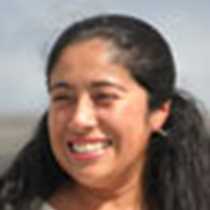Today we were anchored next to the southern coast of Santiago Island close to Sombrero Chino Islet. Our morning adventure started after breakfast with a Zodiac ride to admire the geology and wildlife of this area. It is an amazing, active landscape which makes its geology fascinating! Along the shoreline we spotted striated herons fishing next to the coast, while the gracious Sally light foot crabs were looking for algae. In a little cove there was a yellow crowned night heron looking for shade and not too far away Galapagos shear waters were landing at a small cliff. It was a great outing. We went back on board the National Geographic Islander to get ready for the next activities of the morning- deep water snorkeling, a very interesting hike or just relaxing at the small, white sandy beach of Sombrero Chino. Our guests were delighted with the snorkeling opportunity. The water was very clear and large schools of colorful fish were spotted, white tipped reef sharks made their appearance together with one Galapagos Penguin! The hike at Sombrero Chino was spectacular also. Our guests observed playful young sea lions, marine iguanas, shore birds and a unique geological formation. After snorkeling many guests decided to visit the beach to enjoy the pristine and unique landscape.
As soon as we were on board we changed and got ready for the next activity, the National Geographic Islander was repositioned and we went by the Bainbridge Islets where our Captain Patricio Jaramillo was leading the maneuvers to get close to the Islet. We were able to enjoy the view of the brackish water lagoon inside the Islet which was home to a colony of Greater flamingos! Wonderful pictures were taken and then we continued our navigation towards Sullivan bay.
After a delicious lunch our Expedition Leader, Lynn Fowler, held a very interesting talk about her life at Volcano Alcedo where she conducted her research on Galapagos Giant tortoises. The afternoon action began around 3:30 pm with three groups of hikers that went ashore to explore the remarkable lava flow of Sullivan bay, an extensive area covered by a “pahoehoe”, or ropy lava flow in 1897. Here it is easy to imagine the beginning of life on earth, how life struggled to survive and settle in this harsh environment. We viewed pioneer plants, mollugo plants with lava cactus spread all over the place, breaking the rocks piece by piece, slowly creating the soil for the future generation of plants. This is a visitor site that teaches us how magnificent our planet is and how powerful nature can be. We went back on board with the last sunlight and were all very happy. It was another great day in the remote archipelago that fascinated Charles Darwin and continues to fascinate all of its visitors.







